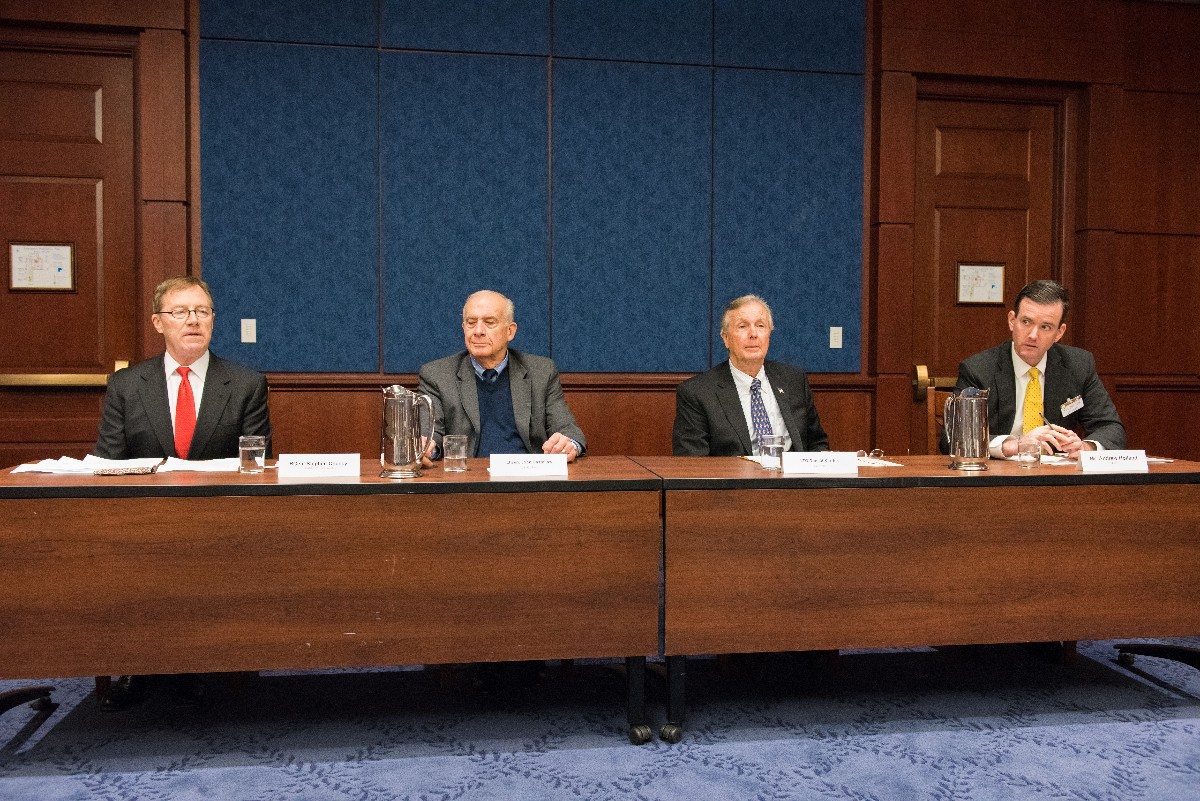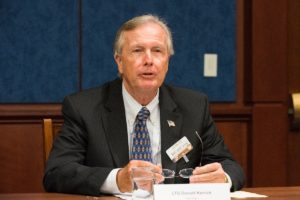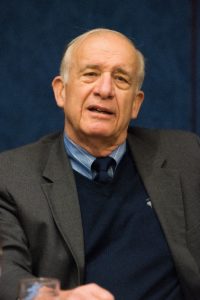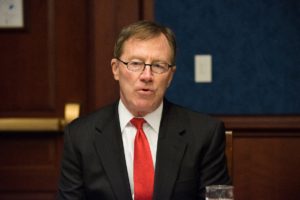
Event Recap: Military Readiness in a Changing World
On November 30th, the American Security Project hosted an event on Military Readiness in a Changing World. The panel included Lieutenant General Donald Kerrick, US Army (Ret.), Lieutenant General John Castellaw, USMC (Ret.), American Security Project’s CEO Brigadier General Stephen A. Cheney, USMC (Ret.), and was moderated by American Security Project’s Director of Studies and Senior Fellow for Energy and Climate, Andrew Holland.
The panel discussed how climate change is affecting both how the military operates and its critical infrastructure. The need to plan for the future was stressed by all speakers on the panel, to ensure that the United States military is best prepared to respond to humanitarian disasters and conflicts fueled by the effects of climate change. The panel also discussed the National Defense Authorization Act (NDAA) and the Langevin amendment. The Amendment clearly states that climate change is a direct threat to national security and that the military must be able to prepare for and mitigate the effects of climate change. The Amendment also requires a report to Congress on the vulnerabilities of military infrastructure to climate related damage, and how climate change is affecting military missions.

Lieutenant General Donald Kerrick US Army (Ret.) spoke first on the how climate change affects every aspect of life – from food production to energy infrastructure and military bases. He argued that the destabilizing effects of climate change will be seen worldwide, which affects how the U.S. military operates. The military sees that the operating environment around them is changing, and that this creates both new missions and changes how standard missions are conducted. National security is often thought of in terms of terrorism or conventional war, but the threats stemming from extreme weather and climate change are also vitally important to consider when planning for the future.

Lieutenant General John Castellaw, USMC (Ret.) opened his remarks by explaining one of his first missions in Chad. He saw how Lake Chad was such a critical element of the country’s economic and social health, as well as how is impacted the region at large. When he returned just this past summer, he witnessed the devastating effects of the lake’s depletion, crippling the economy and giving room for the rise of Boko Harem. Terrorist groups look for unstable environments and ungoverned spaces to infiltrate and operate in. General Castellaw stressed that climate change is never the sole cause of conflict, but that it is an accelerant of instability.

Brigadier General Stephen A. Cheney, USMC (Ret.) opened by discussing the many activities the military is already doing to lower its reliance on traditional fossil fuels and increase energy efficiency, such as the Navy’s Great Green Fleet and the Army’s NetZero program. Cheney stressed that the current NDAA including a recognition that climate change is a threat to national security is a positive step forward. He further stressed that we need to plan 30, 40, or 50 years in advance when building new and upgrading existing infrastructure. Extreme weather has always existed, but now it is being more and more common, forcing the military to take it more seriously. Finally, General Cheney noted that “DOD planners are pragmatic – they see the water rising and react to that reality.”
General Cheney closed by saying that while ASP is still concerned about action on climate change, the NDAA requirement to assess the vulnerabilities of our military installations is encouraging. ASP will be coming out with a factsheet outlining some of the most threatened bases shortly. For more information regarding ASP’s work on this issue and current Congressional action, check out our Climate Security Program.
Additional Resources:
- Congress Affirms Climate Change a Threat to Security – Asks for Military to Prepare
- Fact Sheet: Powering the Department of Defense
- Climate Change and Military Bases
- Climate Change and National Security





